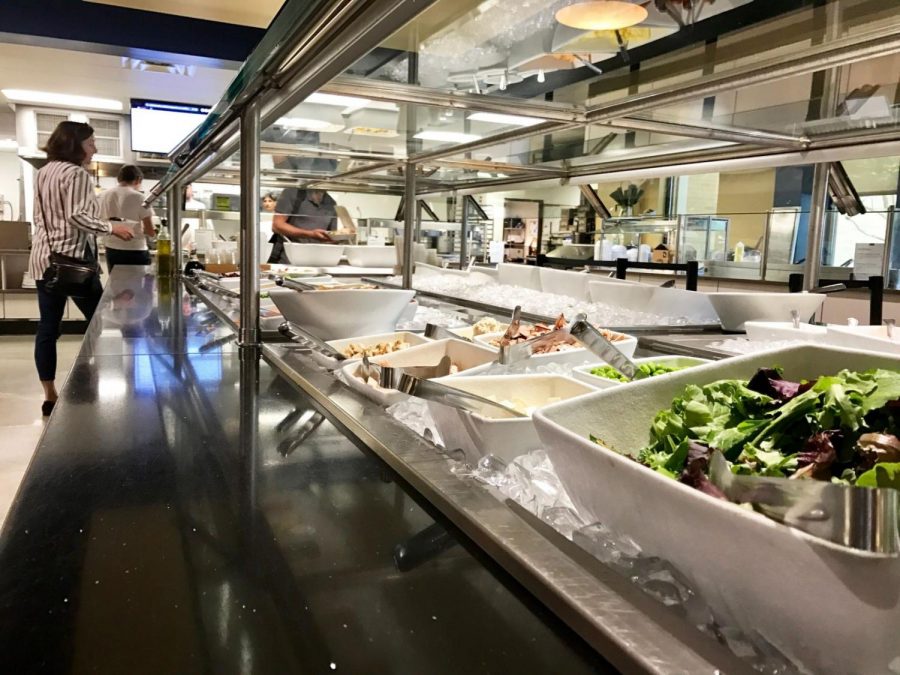Surrounded by food, students still hungry
The image of the broke and starving college student is something so frequently invoked it has become cliché. But data collected at St. Edward’s reveals that this epithet is more than innocent hyperbole; students on campus are going hungry, and so are their professors.
According to a 2016 survey conducted by Kelly Green, assistant professor of psychology, more than 50 percent of students surveyed experience some level of food insecurity.
Food insecurity as defined by the United States Department of Agriculture is “a household-level economic and social condition of limited or uncertain access to adequate food.”
“Food insecurity is not necessarily being currently hungry, it’s not necessarily having to go without food but it’s having to maybe choose between food and another need,” Green said. “It’s having some insecurity or some uncertainty about how you can get enough food between now and then.”
Based on a sample of 338 people, Green found that 28 percent of traditional undergraduate students, 43.8 percent of new college undergraduate students and 25 percent of graduate students reported one or more days going hungry in the past year.
3.4 percent of staff members and 1.6 percent of faculty reported the same.
Green said the data was surprising, but the numbers aren’t far from those reported on other universities across the country: a study conducted by the University of Arizona indicated that nearly 35 percent of first-year students experience some form of food insecurity, and four in 10 University of California students are food insecure, too.
Similarly, 17 percent of Travis county residents live in food insecure households, according to a 2014 report by the Community Action Network.
“One of the things that was surprising to me is how many faculty and staff members are reporting food insecurity,” Green said about the data she is currently collecting. “I was expecting some students but honestly I wasn’t expecting over 50 percent of students.”
Green said that the sample size of her 2016 survey was small and not representative of the entire campus, but she is trying to recruit higher numbers for her second wave of data collection, which she is in the process of conducting.
The new diversity survey includes more questions related to food insecurity, intended to collect more nuanced information about the issue on campus.
“We actually expanded the survey in 2017; we asked two additional questions about food insecurity. I felt like [the question on the 2016 survey] wasn’t really capturing what I was seeing,” Green said. “Going hungry is different from food insecurity.”
Green said her training as a licensed clinical psychologist and interest in social justice and equality drove her to design the survey, which focuses on aspects of the student experience other than food insecurity.
“The reason that I wanted to start doing this survey is to get a better sense of our population here by being able to ask questions that Human Resources and other offices on campus aren’t really allowed to ask legally,” Green said. “I wanted to get a better sense of things like sexual orientation on campus, parenting status on campus, people who are struggling in other ways. I think we often make the assumption that people who go to St. Edward’s are OK financially and a lot of them aren’t.”
Besides food insecurity, the diversity survey asks questions about discrimination, parental status, homelessness and gender identity on campus.
“What I started noticing was that it wasn’t just students who were struggling with some of these things, it was staff, it was faculty, and there really wasn’t a place to have those struggles recognized,” Green said. “I wanted to start giving a place for students’ faculty, and staff to have their voices heard.”
Green said that there are currently no institutional resources on campus specifically aimed at addressing food insecurity and hoped the university would take note.
“I think this is a much bigger concern than we even recognized that it was and hopefully we can start to see some improvements,” Green said. “I do think that is an area of student, faculty and staff need that is not adequately addressed at this point and hopefully this data can bring some attention to that so we can start to develop programs.”
Some students and professors on campus are aware of the issue and are trying to come up with practical solutions to the issue.
“I think in tandem there are a whole bunch of things happening,” Associate Professor of Philosophy Jack Musselman said. “But the right hand doesn’t know what the left hand’s doing. And so the real task here is, with the right data from someone like Kelly Green, and with enough desire to help, we have to figure out what the best plan is.”
Musselman said that he and other faculty have met to discuss how to address food insecurity. Although there is not a clear answer, the university is working on finding a solution.
“Not trying is not an option. We just have to figure out what the best solution is. Maybe the first task is just to say we’re having this great discussion about it,” Musselman said. “At the very minimum, faculty should have their ears and eyes open and if they discover that a student has this concern we can connect them to resources and people that can help.”
“If community here means anything, it’s that we don’t turn away from students in need.”
The survey can be taken here: tinyurl.com/seudiversity







